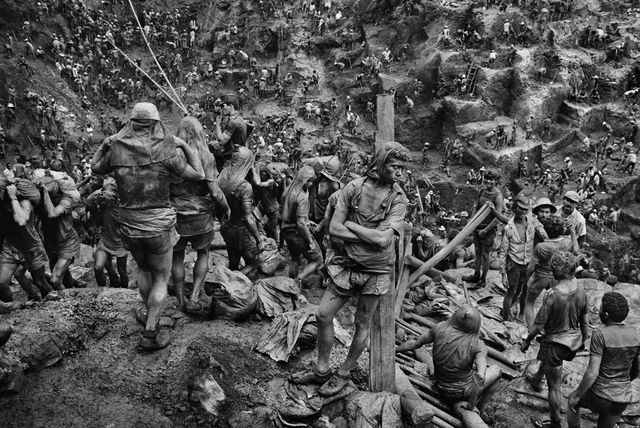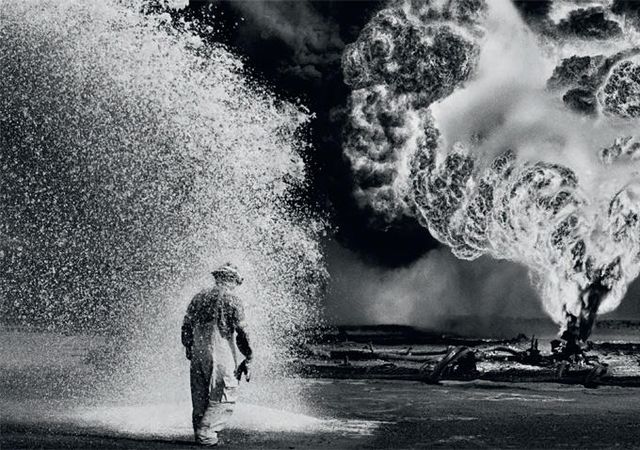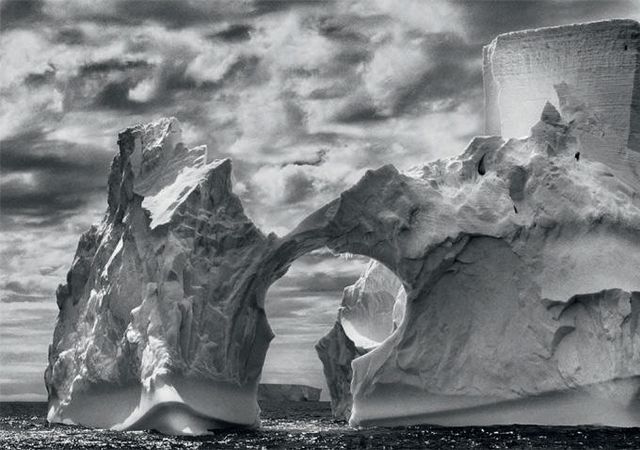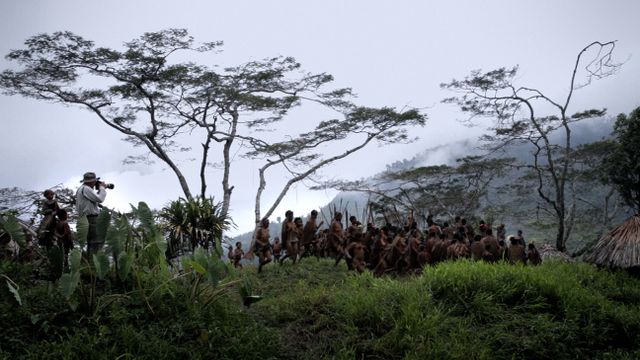David Walsh
Directed by Wim Wenders and Juliano Ribeiro Salgado; written by Wenders, Salgado and David Rosier
Veteran German director Wim Wenders (The American Friend, Paris, Texas, Wings of Desire, Buena Vista Social Club, Land of Plenty, Pina and many others) and Juliano Ribeiro Salgado have teamed up to make a film about the 40-year career of the latter’s father, the well-known Brazilian-born photographer Sebastião Salgado.
 The Salt of the Earth
The Salt of the Earth
Salgado (born 1944) is perhaps most renowned for his photographs of workers and the poor, sometimes the starving and dying, in impoverished regions, along with his pictures taken amid various terrible social disasters, especially those in Ethiopia, Rwanda and the Congo in the 1980s and 1990s.
His work has been published in various collections, including Other Americas, 1986; An Uncertain Grace, 1990; Workers: Archaeology of the Industrial Age, 1993; Migrations, 2000; Sahel: The End of the Road, 2004; Africa, 2007; andGenesis, 2013. Each of these volumes represented years of photo-taking and often involved travel to far-flung parts of the earth.
Wenders, in a voiceover, introduces The Salt of the Earth. The first of Salgado’s images the filmmakers present is of the Serra Pelada open-cast gold mine in Brazil (now closed), and it is an astonishing one. From one side of a giant crater we see the opposite wall of this vast hole in the earth, filled from its bottom to its top with a mass of mud-caked humanity, some 50,000 workers, according to the commentary. Each worker, carrying a sack of ore weighing between 60 and one 100 pounds, climbs up a series of ladders 50 or 60 times a day.
 The Salt of the Earth
The Salt of the Earth
The film then discusses Salgado’s early life. Having grown up on a cattle ranch, Salgado attended the University of São Paulo and studied economics during the period of the Brazilian military dictatorship (which lasted from 1964 to 1985). He participated in the opposition to the dictatorship and eventually moved to Europe, first London, and worked for the International Coffee Organization, often traveling to Africa for the World Bank.
In 1973, now living in Paris, Salgado forsook economics for photography. Among his first photos was a series done in Niger in 1973 during a severe drought. He traveled throughout Latin America during the years 1977-84, visiting, as was his wont, the most remote regions.
During the 1980s, he spent several years in the Sahel, the region across Africa between the Sahara Desert to the north and the Sudanian Savanna to the south. He saw immense suffering here too. He covered the famine in Ethiopia in 1984, which caused more than 400,000 deaths in the northern part of the country. Some of his dying subjects look like concentration camp victims, little more than skin and bones.
From 1986-91, he took photos all over the world for Workers, paying homage to those who labor. The voiceover comments that he was “driven by the same empathy for the human condition.” No doubt Salgado took the assignment and the subject matter seriously.
The famine in Ethiopia, which was worsened by political considerations, and his coverage of the massacres in Rwanda and the Congo in the mid-1990s “changed” Salgado, we are told. Certainly, the images are horrific, both of roads lined with corpses and of innocent civilians driven into the jungle and then massacred or left to die. On top of that, he traveled to the former Yugoslavia and photographed atrocities committed by both Croat and Serb forces.
 The Salt of the Earth
The Salt of the Earth
What conclusions did Salgado draw from this? In any case, they didn’t come out of the blue. His conclusions were prepared by his social background, his conditions of life and his world outlook. He determined, he tells us, that the fault lay with humanity itself. “We are a ferocious animal,” he tells the camera. “We are violent … our history is a history of wars. It’s an endless story.” Everybody should see the images from the Congo, he says, “to see how terrible our species is.”
This is to draw very false and superficial lessons from the events. Many others did too, of course, with varying degrees of self-interest. The horrors in Ethiopia, Rwanda and the former Yugoslavia did not flow from any innate characteristic in humanity, its supposed propensity for savagery, but, above all, from the specific policies pursued by the Great Powers (plus the history of brutal imperialist rule in the case of Africa) and the rottenness of the national ruling elites. Global capitalism created the conditions for the disasters and consciously instigated ethnic and communal conflicts for its own selfish, geopolitical purposes. Then, it made use of the horrors it had created to justify the attempt to recolonize large portions of the globe.
In any case, Salgado returned to Brazil after deciding that there was “no salvation for the human race.” Along with his wife, he found “healing” in the replanting of the subtropical rainforest in and around his family’s land in Aimorés, Brazil and the establishment in 1998 of the Instituto Terra, dedicated to sustainable development. After treating a couple of expeditions that Salgado made for his newest work, Genesis, about relatively untouched areas of the planet, the film ends on that note—that “the destruction of nature can be reversed.”
The political views articulated here, seconded by Wenders, are very weak. Salgado began as a representative of the International Coffee Organization and the World Bank, presumably working on economic development, and never broke fundamentally from this standpoint, the effort to create a more workable, humane global capitalism. Ideologically, he inhabited for decades the world of NGOs, United Nations organizations, Doctors Without Borders, etc. The notion that by reclaiming 17,000 acres of land in a remote part of Brazil the Salgados are pointing the way forward for humanity to save itself is indicative of a very narrow outlook and very swelled heads.
 The Salt of the Earth
The Salt of the Earth
Salgado no doubt sincerely sympathized with the suffering people he photographed, but the possibility that these people needed to organize themselves and overthrow their conditions of life, and that they were capable of it, clearly never entered his head. The period in which he worked certainly played a role in this.
The Brazilian photographer has been sharply criticized from a number of quarters for “aestheticizing” the wretched of the earth. One widely circulated critique, by Ingrid Sischy, “Good Intentions,” published in the New Yorkermagazine in 1991, took Salgado to task for his “beautification of tragedy.” His pictures, Sischy argued, comparing the Brazilian unfavorably to such figures as Lewis Hine and Walker Evans, merely “reinforce our passivity.”
She complained, moreover, about the religious strand in Salgado’s photos, for his “coupling human suffering and God’s will.” About one well-known picture of a sightless woman, Sischy asserted that Salgado makes the blindness “holy—in other words, that it needn’t be seen as something to cure.” She claimed, moreover, that “the people in his pictures remain strangers.” His “sentimentalism … isn’t any kind of breakthrough.”
Some of the points are legitimate, but others seem unfair. Many of Salgado’s photos are deeply moving and effective. His sincerity and his intrepid efforts to record the human situation cannot be called into question. At any rate, the criticisms are not really criticisms of Salgado as an individual, but of a social outlook and atmosphere born of a definite historical moment.
The defeats of the working class in Latin America in the 1970s, the collapse of the Eastern European Stalinist regimes and ultimately the Soviet Union, the protracted decline of every labor organization, the apparent triumph of the “market” and “free enterprise,” all had an impact. Various artists and filmmakers, losing confidence—or never having had much confidence—in the ability of the mass of the population to mobilize itself and create a better world, began to discover means by which “beauty” and “joy,” or even “holiness,” could and should be found within existing conditions.
 The Salt of the Earth
The Salt of the Earth
Abbas Kiarostami’s 2001 documentary ABC Africa, about Uganda’s AIDS orphans, was one prominent example of this trend. As the WSWS commented at the time, “Moreover, by avoiding a larger framework and excluding the possibility of radical change, the film veers dangerously close to making a virtue out of necessity, suggesting at times, ‘Well, life is beautiful and people are happy, even under these conditions!’ Left for all intents and purposes out of the picture is any systematic questioning of a social order that produces such a human catastrophe.”
Salgado has zigzagged from placing a curse on the world’s populace to acting as though, with a little help, the planet will heal itself, without ever seriously considering the root cause of humanity’s problems, its social and economic organization and the dominance of a tiny handful that control vast wealth and power.
The artist’s responsibility is neither to ignore the way things are nor to become overwhelmed by it. “When I say that we must be satisfied with the reality of what exists,” wrote Trotsky in 1908, “you, of course, will not think that I mean that we must be satisfied with what exists. Just the absolute opposite: a great and persistent protest against what exists only becomes possible when we accept the world unconditionally, in its incontrovertible reality.” (“On Death and Eros”)
Unhappily, The Salt of the Earth contains neither a genuine coming to terms with the world’s incontrovertible reality nor a great and persistent protest against its conditions.
No comments:
Post a Comment